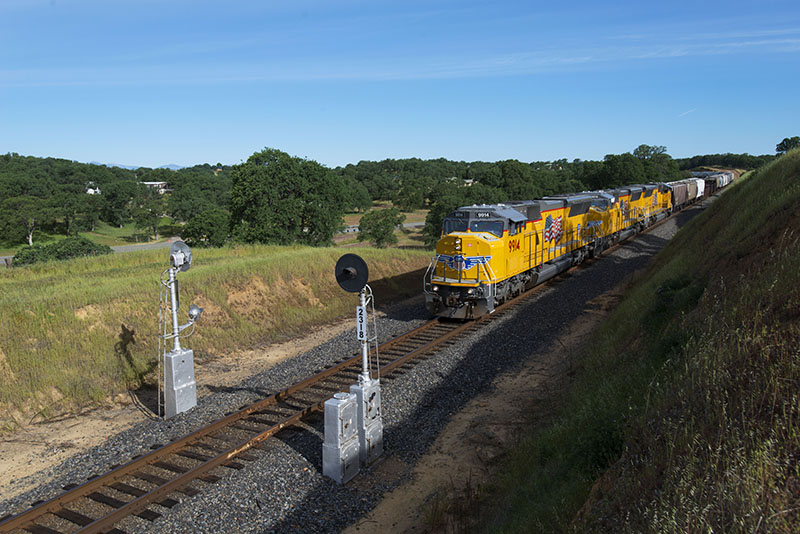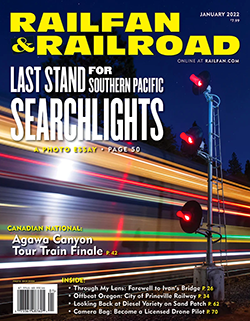 By Dick Dorn/photos by the author
By Dick Dorn/photos by the author
Since the Union Pacific takeover of Southern Pacific in 1996 there has been a steady removal of classic searchlight signals, cantilevers, and signal bridges throughout the system. At first, it was at a slow pace, then, with the advent of Positive Train Control, the removal picked up a great deal of urgency. Today, few examples remain along the former Espee lines operated by UP, and time is running out.
Southern Pacific first began using the Automatic Block Signal (ABS) system in 1901 on the original Coast alignment from San Francisco to San Bruno over Oceanview Summit, utilizing semaphore signals that give indication based on the position of the arm. Shortly after Union Switch & Signal’s introduction of the Style “B” semaphore in 1898, SP made exclusive use of this hardware across the entire railroad.
By 1907, the entire Coast Line was signaled from San Francisco to Los Angeles. Being a part of the Harriman Lines and influenced by UP control, SP was a real believer in safety early on and ABS signals were a huge leap forward in safety applications. Two of the last larger semaphore installations in service on SP were the Phoenix Line and the Tucumcari Line. The final SP semaphores lasted until 2007 on the Siskiyou Line operated by Genesee & Wyoming’s Central Oregon & Pacific.
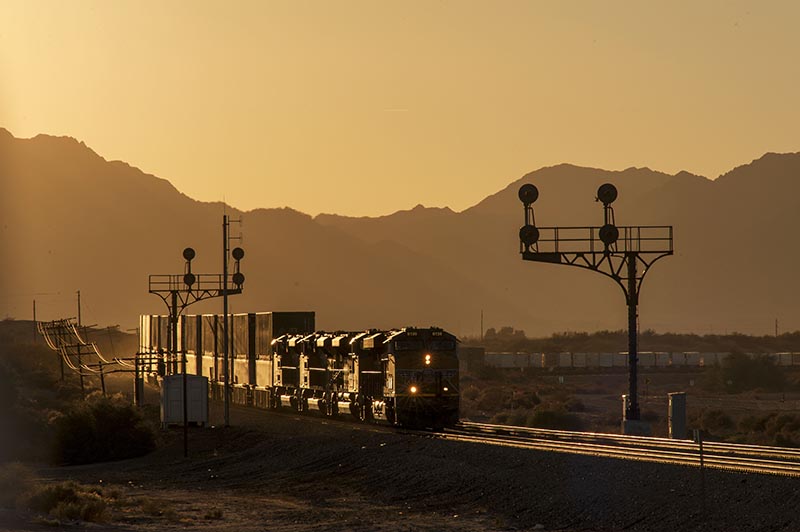
ABOVE: An eastbound stack train splits the cantilevers at Welton as the last rays of the sun provide dramatic lighting against the backdrop of the Gila Mountains on November 11, 2016.
A Modern Advancement
The Hall Signal Company was behind the development of the searchlight signal, a vast improvement over its original “disc” signal. Hall developed a sophisticated system that included an efficient elliptical reflector mirror which focused the light on roundels. There was also a state-of-the-art lens system that further focused the light beam. That and the low-voltage lamp behind an almost miniature vane with three roundels projecting light through to the lens system were the real keys to the searchlight signal. There was a specially built bulb with a filament that concentrated light in a very specific area focusing on the roundels.
The small vane was constructed so that upon failure of the signal mechanism, it would always revert back to the most restrictive signal display. When no voltage was applied, the vane would fall back to the restrictive position due to gravity. There were separate relays that moved the signal head and lit the lamp. If just the lamp was lit, it would show the most restrictive indication — usually red — then by sending voltage to the relay that controls the vane, it would move to green. To get the yellow aspect the current was reversed.
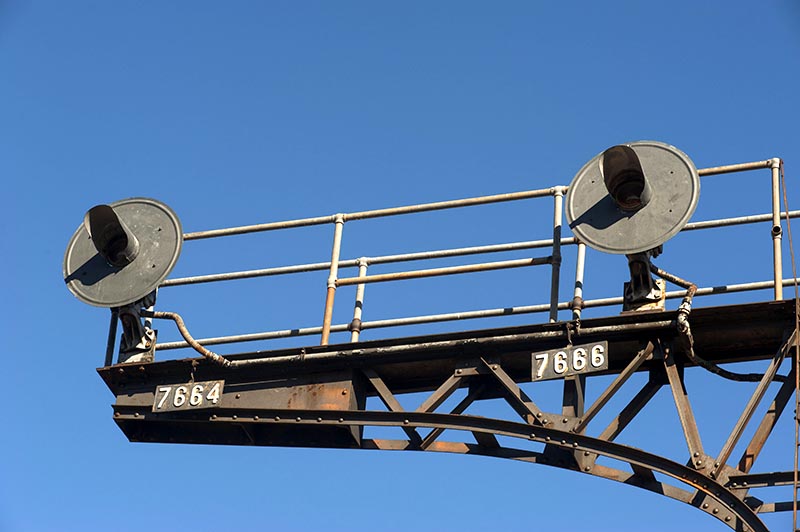
ABOVE: Just west of Welton, a cantilever with searchlights guards the tracks. Note the cast iron signal number plates on the bridge. These provide the milepost at this location. The number plates are always even numbered for eastbound trains and odd numbered for westbound trains. The number plates are found only on permissible signals and never on an absolute signal.
In 1925, US&S purchased Hall Signal Company with the express purpose of obtaining the patent rights to the searchlight signal. This first searchlight had what was called an “H” signal mechanism. In later years, further improvements developed the “H-2” mechanism. This became the most commonly used railroad signal in the western U.S. General Railway Signal produced a similar searchlight signal system but it was never used on SP. The “H-5” was the final searchlight model produced by US&S; this was a larger and more effective signal but was not widely used on western roads with the exception of Santa Fe.
Southern Pacific Standard
In 1928, US&S introduced the modern searchlight signal that was much simpler to maintain than a semaphore. These signals could also be seen from much farther away, especially at night, a real safety advantage over the semaphore. Searchlight signals are said to be visible for more than a mile during daylight hours and much farther at night (hence their nickname).
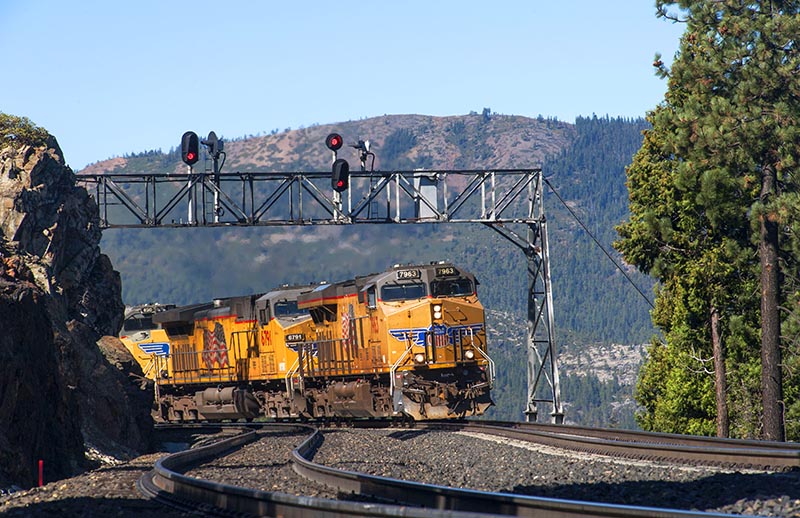
ABOVE: The signal bridge just east of Shed 10 on California’s Donner Pass shakes with the passing of an eastbound freight on October 15, 2020. This signal bridge was the last one installed on Donner in 1964.
Southern Pacific took notice and, according to my best research, the railroad made its first searchlight installation on the West Valley Line between Davis and Woodland, Calif., for a short distance of nine miles; this was previously unsignaled “dark” territory. These signals immediately proved to be highly successful and later that year, the remaining 101 miles north to Tehama were under construction. At this same time, a second searchlight installation began on 105 miles of the East Valley Line between Roseville and Tehama. Both of these searchlight installations were completed by 1930…


